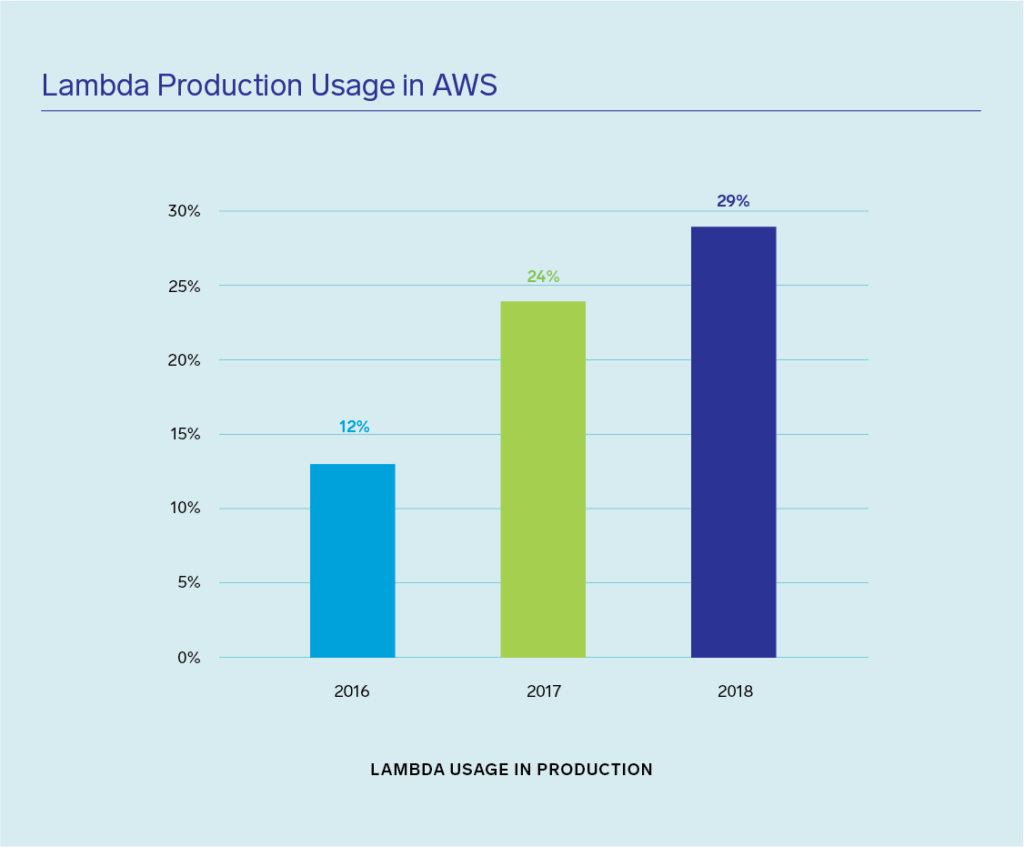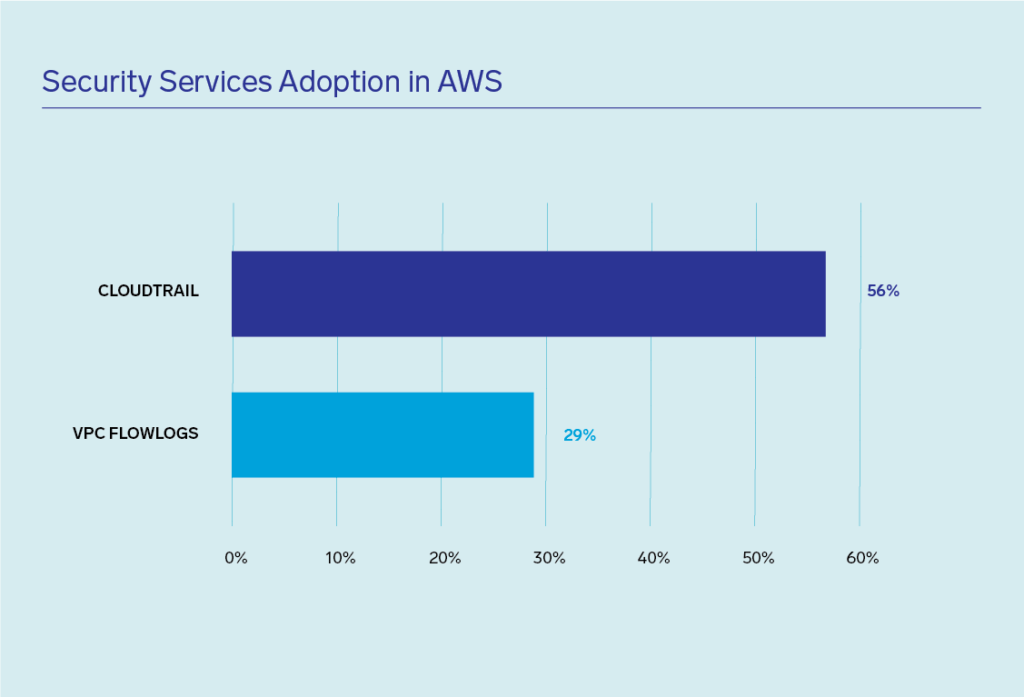Evaluate your SIEM
Get the guideComplete visibility for DevSecOps
Reduce downtime and move from reactive to proactive monitoring.
November 26, 2018
In Sumo Logic’s latest report, The State of Modern Applications & DevSecOps in the Cloud , we were able to take a unique perspective of how companies are continuing to build using AWS and which emerging technologies and trends are rising in adoption. Sumo Logic is in a unique position to get this data — and adoption insights — by ingesting data from over 1,600 customers and aggregating and anonymizing the data to get a holistic view on how modern companies are continuing to innovate.
Based on our data, 70 percent of our customers are solely building on AWS while another 9 percent are using a multi-cloud approach. Segmenting the whole dataset on AWS quickly shows which technologies are most prevalent within AWS environments. We pulled data on:
Introduced four years ago at re:Invent, AWS Lambda is an event-driven technology offered by AWS. It’s mostly used for on-demand modern applications needing to run quickly and often. With the rise of IoT devices, Lambda has proved to be a helpful framework for dealing with multiple APIs.
Sumo Logic has been tracking Lambda adoption for the past three years and we’ve seen the growth both anecdotally and with data. The use of Lambda in production has more than doubled since 2016 and nearly a third of AWS applications now use Lambda.
Despite the adoption of Lambda by AWS users, there is still a lot of uncertainty out there in the industry regarding how serverless computing fits into the overall modern application stack. As DevSecOps continues to grow and data become a strategic tool for more than just the operations, development and security departments, it’s also become a crucial business resource. As we continue to see data democratization occur across all lines of the business, customers are no longer concerned about where their applications reside, which is why many believe serverless is the perfect vehicle for making that data readily available to everyone.
Amazon also introduced EC2 Container Service at re:Invent 2014 (along with AWS Lambda). Containers and orchestration technology allows developers to push code in packages, encouraging microservices and allowing teams to ship more frequently.
The benefits are obvious and unsurprisingly increasing in adoption among teams building on AWS. Both ECS and Kubernetes adoption grew 6 percent over the last year.
One of the first container technologies and typically the most prevalent, Docker, continues to grow their use in AWS. More than 25 percent of enterprises use Docker containers in AWS.
I wrote recently about the split between NoSQL and relational database use in AWS. Modern enterprises are continuing to use NoSQL databases for their flexibility and scalability. These technology choices are often at the expense of legacy tools like Oracle and Microsoft.
In the above article I said, “DevOps teams need more agile and flexible tools built for continuous deployment. These buzzy trends are having tangible impacts on legacy tools, notably databases. Oracle, once the dominant database in the market, isn’t in as high of demand as more teams opt to use NoSQL databases in AWS and other public cloud environments.”
As hacks and breaches become more mainstream and are becoming seemingly more frequent, companies have taken an increased focus on their cloud security. It’s a top concern for companies adopting a public cloud strategy as well. We’re relieved to find more than half (56 percent) of cloud enterprises are taking advantage of the AWS audit service, CloudTrail. We also found 29 percent of enterprises are using VPC Flow Logs to bolster their security efforts.
Conversely, we’ve seen the adoption of threat intelligence services such as AWS GuardDuty (10 percent) or the native Sumo Logic Threat Intelligence powered by CrowdStrike (17 percent) being utilized in a smaller subset of enterprises — a little more than one in four. Threat intelligence tools provide an extra layer of security by using proprietary machine learning analysis to monitor and thwart attacks.
This is an improvement over last year’s report, however, we still have a long way to go in order to continue to stay abreast of new and emerging threats and take the necessary steps to implement the right security monitoring tools to harden our overall security posture.
This week about 60,000 cloud-focused operations, development, security and business decision makers descend upon Las Vegas for undoubtedly AWS’ biggest conference — re:Invent 2018.
The data from our Modern App Report further validate the importance of and need for scalable solutions and applications to help advance modern IT strategies — and now the industry is coming together to continue to bring those innovations to market. As companies continue to invest in public cloud to adopt modern applications that deliver real value to their customers, it will be interesting to see what new announcements and product updates AWS will debut.
If you’ll be at the conference and want to learn more about what Sumo Logic is up to, stop by booth #840 to chat with us, or to get a demo on how the Sumo Logic platform empowers DevOps and DevSecOps professionals to do their jobs more effectively and efficiently.
Also, don’t forget to visit our “Join us at AWS re:Invent” page to get the details on our Sumo Slam Jam party, to book meetings with any of our executives, and to learn how to centralize your AWS logs and turn analytics into business, operational, and security insights.
We’ll see you there!
Reduce downtime and move from reactive to proactive monitoring.
Build, run, and secure modern applications and cloud infrastructures.
Start free trial




